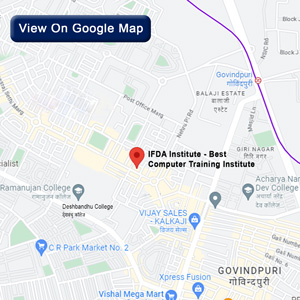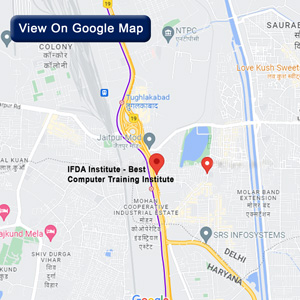Web Pentesting Application

As a result of the growth of the internet, web applications are essential to the modern business world. Most of them control all aspects of the enterprise, including customers’ records and even financial operations. Due to the critical roles that they have now been assigned, there is a need to safeguard them. Well, this is where web application penetration testing, or pentesting, comes in.
Web application penetration testing is simply an evaluation or assessment of the security of an application that is located on a Web server and accessed via the internet.
Web application penetration testing, also known as pen-testing, is a legal method of seeking out and probing vulnerabilities in a web application. It is a method for carrying out a number of authorized and restricted tests to identify vices that can be manipulated by attackers. Its aim is to identify these weaknesses with the purpose of eliminating them in a way that they cannot be exploited in actual operations.
Web application testing is important because:
1. Protect sensitive data: Web applications necessarily deal with personal data, including and especially financial data, as well as other data that belongs to a business. Pentesting assists in preventing this data from being compromised or hacked in one way or another.
2. Regulatory Compliance: It is amazing how many industries operate under regulations that predispose them to undertake security assessments frequently. For example, the Requirement Card Industry Data Security Standard, known as PCI DSS, requires organizations that engage in the processing of credit cards to undergo pentesting on a regular basis.
2. Regulatory Compliance: It is amazing how many industries operate under regulations that predispose them to undertake security assessments frequently. For example, the Requirement Card Industry Data Security Standard, known as PCI DSS, requires organizations that engage in the processing of credit cards to undergo pentesting on a regular basis.
3. Management of a company's reputation The fact that a security breach can cause a significant amount of damage to a business in the modern world is awful. Pentesting prevents the company from being associated with a shady and untrustworthy image while also enabling protection from breaches.
4. Identify real-world threats:Penetration testing is similar to the modus operandi of hackers and is therefore practical in giving an understanding of how an application may be vulnerable to an attack. This makes it easier to note the real threats and develop an adequate response.
5. Improve Security Posture: Therefore, by having an understanding of the shortcomings and the development of measures to counter them, an organization can enhance what it considers to be insecure and, in the process, reduce the probability of a break-through.
How is web application testing performed?
Web application pentesting involves several phases:Web application pentesting involves several phases:
1. Planning and Scope:The first of these is the test's scope description. It clarifies the scope of the testing, the applications or components that will be subjected to it, and any permissions that may be required. It makes it easier to communicate information to various stakeholders in a way that they can understand, making sure that everyone knows what's going on in the business.
2. Information Gathering: In this phase, pentesters gather all the possible information regarding the web application. This includes an assessment of the structure or architecture of the application, as well as the technologies that are in use and the possible points of attack.
3. Vulnerability Assessment: Here, the pentesters employ the application of automated tools as well as manually trigger tests to expose these flaws within the application. Some of the familiar threats are SQL injection, cross-site scripting (XSS), and cross-site request forgery (CSRF).
4. Exploitation: In this case, pentesters try to get into specific vulnerabilities to see how dangerous they are. These are important factors helping to evaluate the level of each identified vulnerability and its impact on the application.
5. Post-Exploitation: The last step of the pentesters involves considering the opportunity granted and the harm that possibly could be done. It assists in realizing the practical consequences of the vulnerabilities in the subject area.
6. Reporting: The last is to produce a report of the research pertaining to the investigation findings. A list of the vulnerabilities that were discovered, their potential consequences, and some measures to minimize them are included in the report. The purpose is to make general recommendations that may contribute to the enhancement of application security.
4. Remediation and Retesting: After receiving the first pentesting report, the development team starts working on ways of resolving the found vulnerabilities. After remediation is done, everyone is re-tested again in order to confirm whether the flaws have been closed or not.
There are a variety of web application types that can be tested during pentesting, including the following:
Indeed, there are various benefits to ethical hacking, but it cannot be denied that this profession has its fair share of risks.
1. Black Box Testing:The tester also has no information about the internal structure of the application. This is like assuming the position of an external attacker.
2. White Box Testing: The pentester also has the possibility to test known and unknown vulnerabilities of the application’s source as well as its architecture. This enables a proper consideration of internal risks.
3. Gray Box Testing: The pentester has a relatively low level of knowledge about the application; that is, they have some characteristics of both black box and white box testing. This approach offers an extended vision of the degree of security that the application has.
Some of the most frequent vulnerabilities that are commonly found in the pentests are as follows:
1. SQL Injection: This is when an attacker interjects bad SQL statements into the fields of the application or database as a way of having the latter work on the inputted information.
2. Cross-Site Scripting (XSS): Cross-site scripting involves putting scripts on the pages that other users render, which can force them to reveal their identities or drain their accounts.
3. Cross-Site Request Forgery (CSRF) CSRF attacks exploit the user into performing unwanted actions on a web application in which the user is logged in.
4. Insecure Direct Object References (IDOR): This vulnerability enables attackers to gain access to objects that they should not be allowed to get by tampering with input parameters.
5. Security MisconfigurationsThese arise when security settings have not been properly done, and this exposes a framework to some risks.
Pentesting is the process of testing an application for vulnerabilities while mimicking the behavior of an attacker to identify the possible threats one can launch against the application footprint.
1. Regular Testing: Security threats are not stagnant, and occasionally it is necessary to test new threats and new methods of attack.
2. Comprehensive Scoping: delineate the ¿bounds and goals of the pentest so that all the major components will be covered.
3. Use of Multiple Tools: Use both the automated and manual approaches to guarantee that good tests have been conducted.
4. Collaboration with Development Teams: Communicate with developers to familiarize themselves with the application and better perform a fix on the noted problems.
5. Post-Test Follow-Up: Keep track of all the vital aspects of the security of the application and review them regularly for updates and enhancements to security mechanisms.
Conclusion
Among the most important and widely used methods of modern cybersecurity is web application penetration testing. Using techniques of attack simulation and determining certain weaknesses, an organization can safeguard information, conform to standards, and protect its image. Pentesting can be done at regular intervals along with good follow-up measures so that no malicious intervention can happen and the web applications remain safe.
- Written By - Natasha Singh









